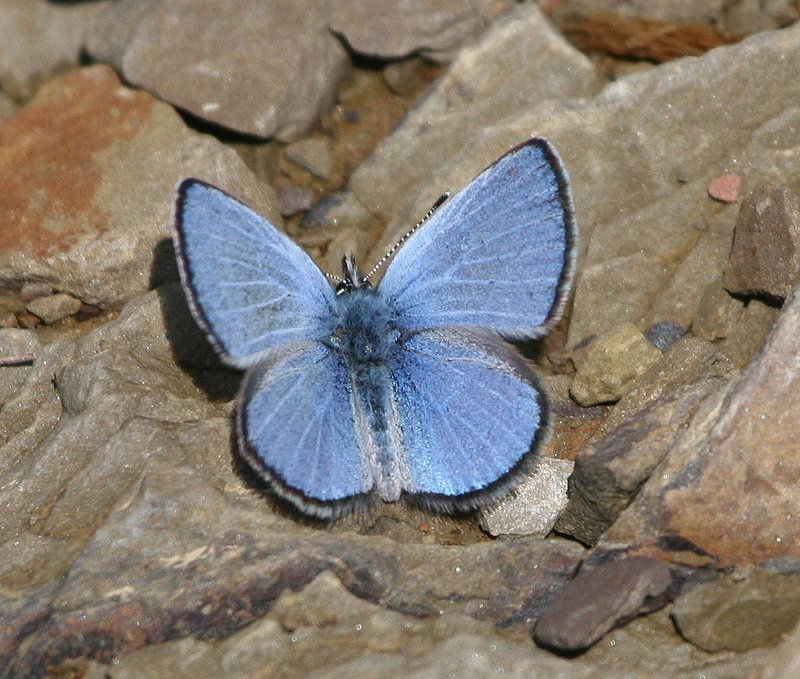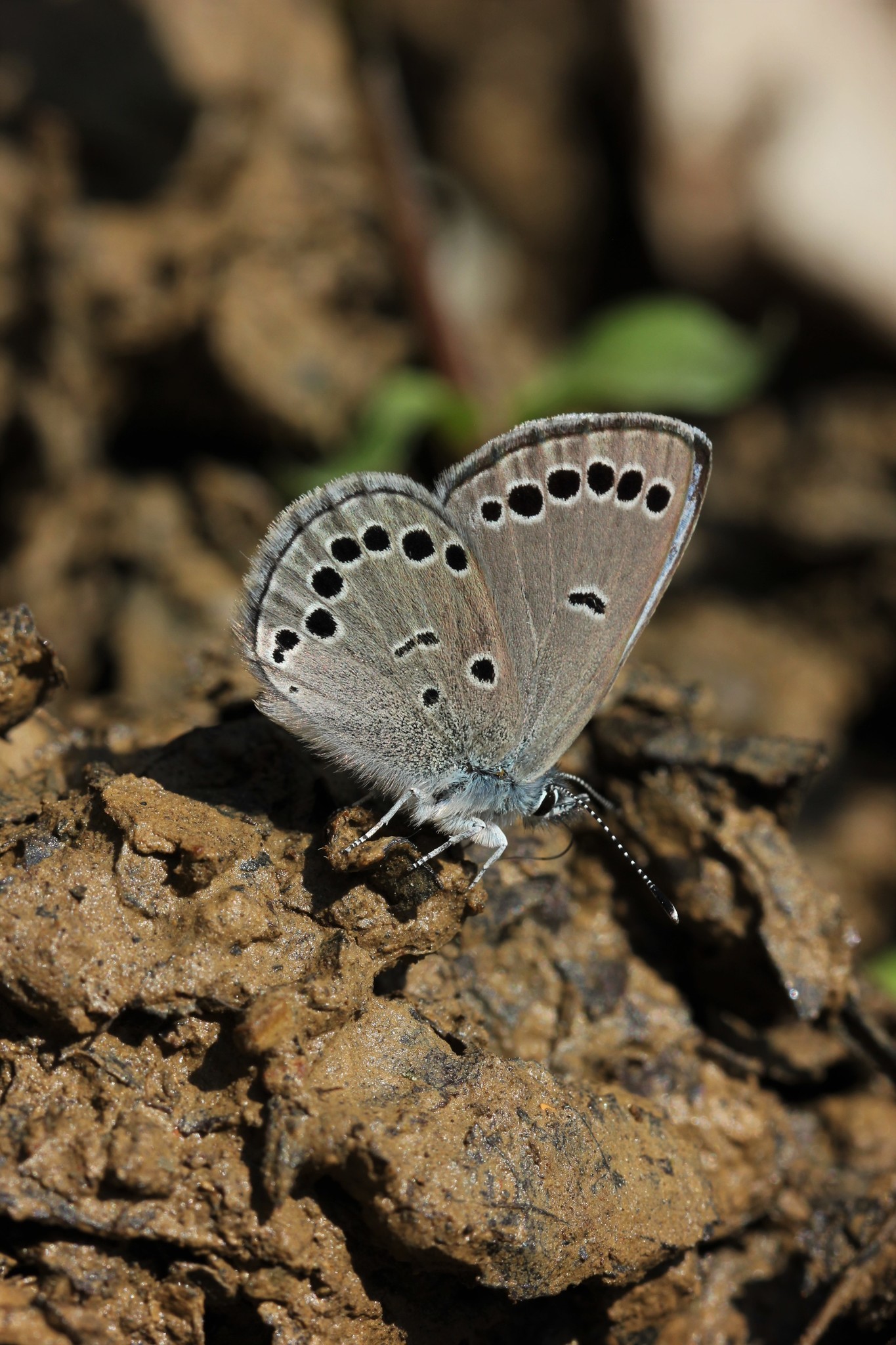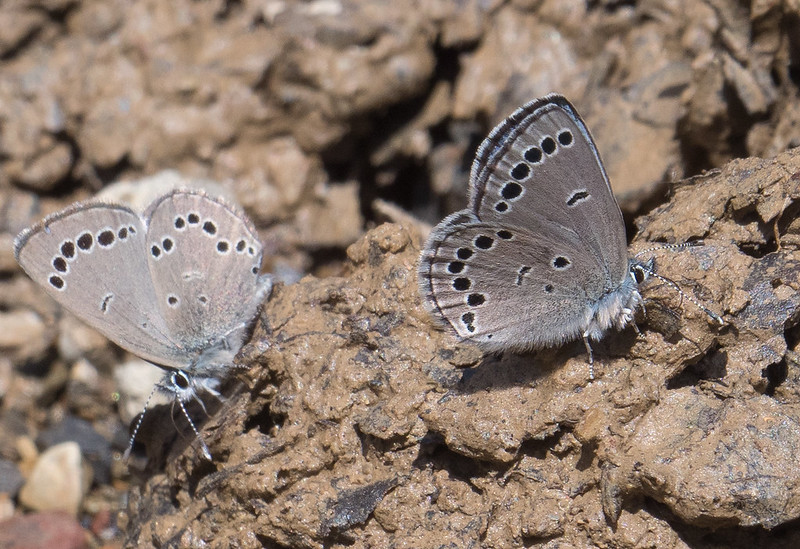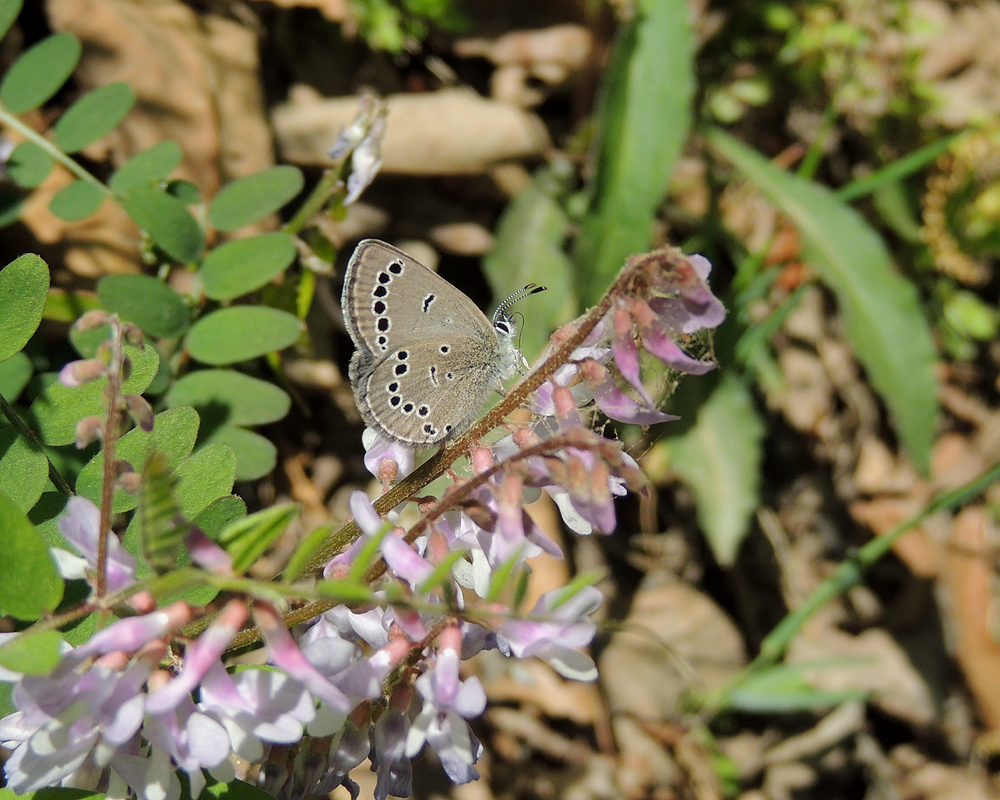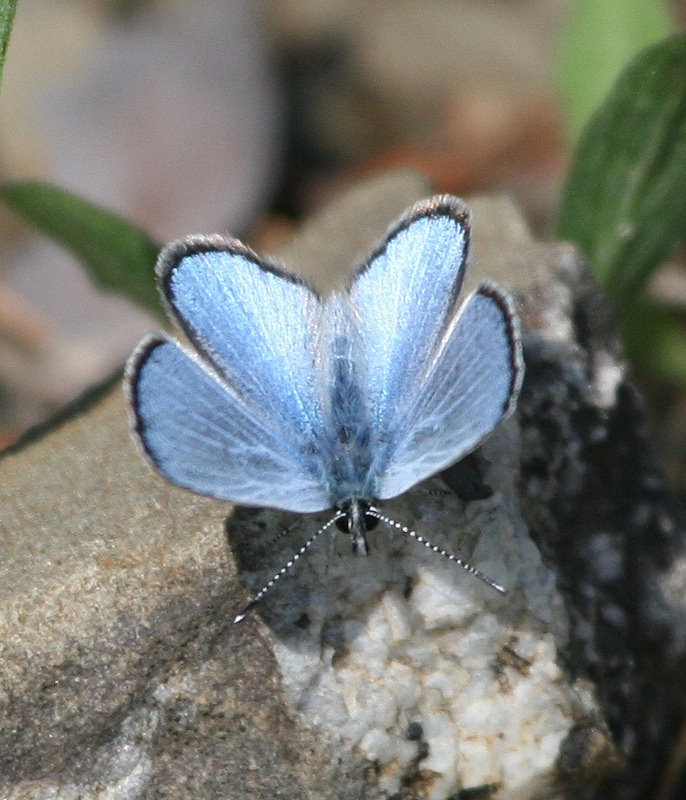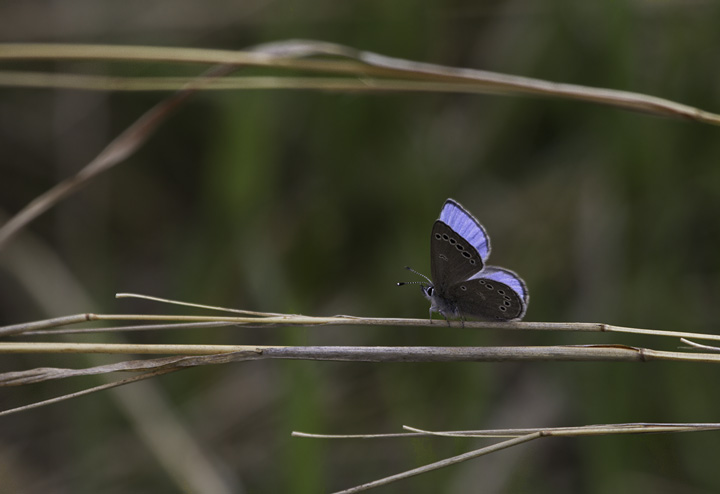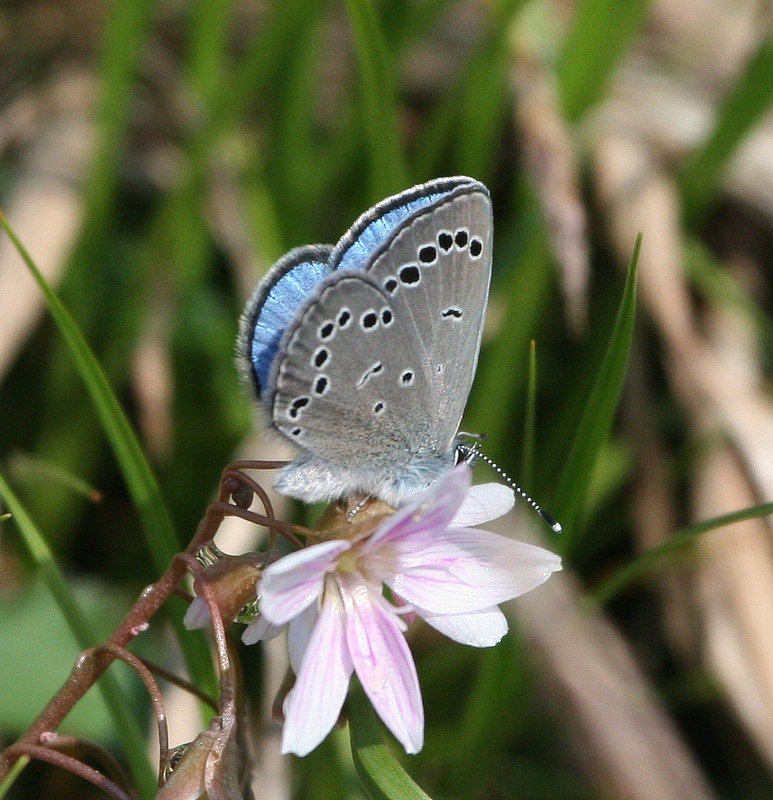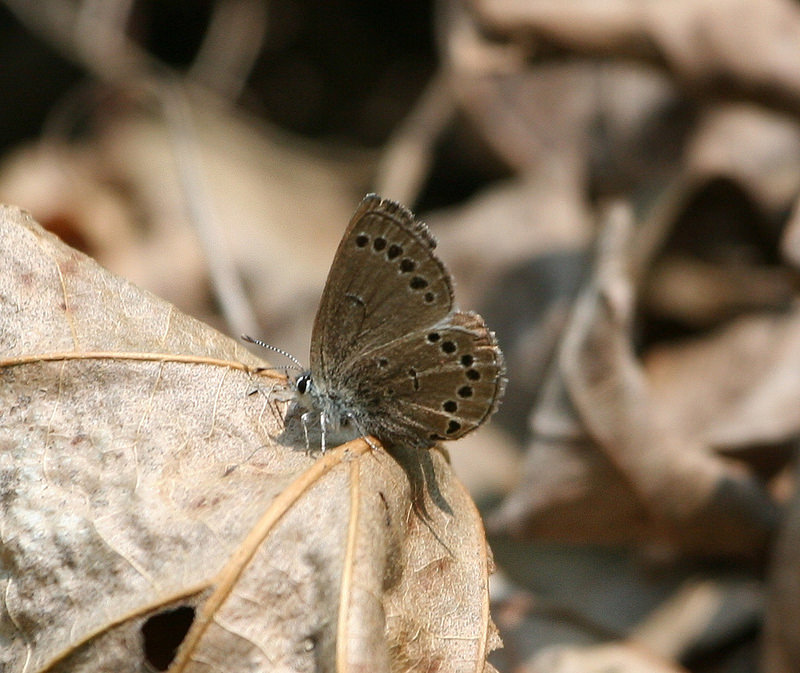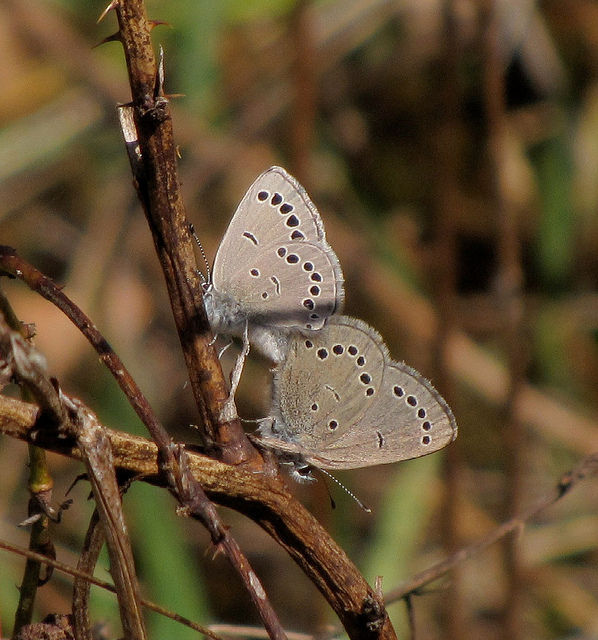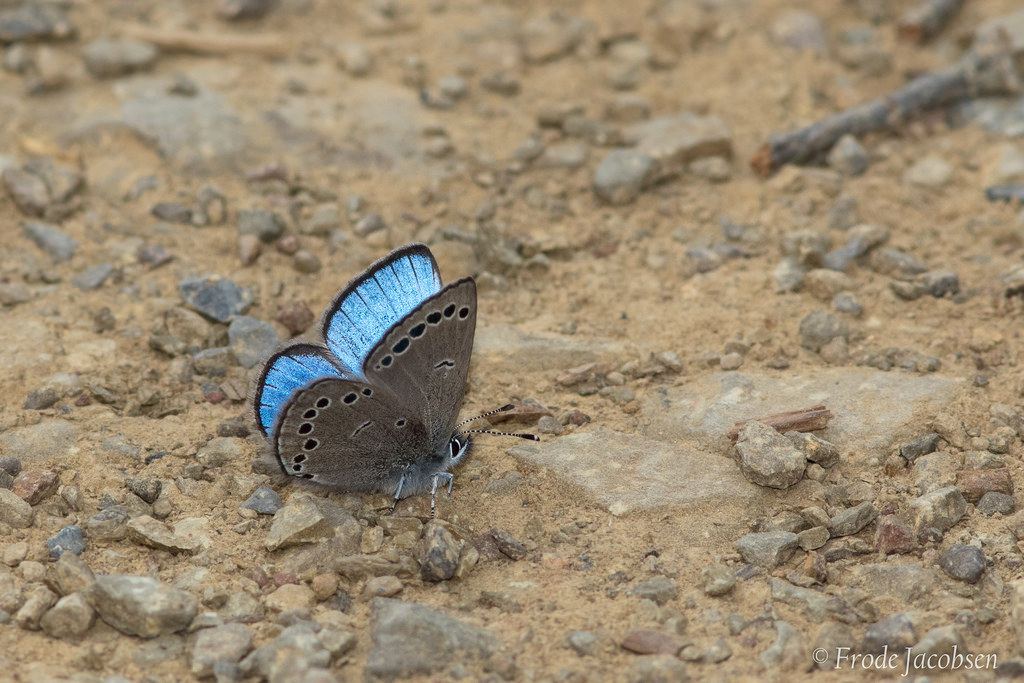Map Snapshot




100 Records
Status
In Maryland Silvery Blue is restricted to the far western counties where its host plant Carolina Vetch is found. In Maryland Silvery Blue can be found on dry slopes especially in shale barrens.
Where To Find
Look for Silvery Blues on warm sunny days in April and early May.
Relationships
Host plants include Carolina Vetch (Vicia caroliniana).
Seasonality Snapshot
Source: Wikipedia
| Silvery blue | |
|---|---|

| |
| G. l. couperi, Ottawa, Ontario, Canada | |
| Scientific classification | |
| Domain: | Eukaryota |
| Kingdom: | Animalia |
| Phylum: | Arthropoda |
| Class: | Insecta |
| Order: | Lepidoptera |
| Family: | Lycaenidae |
| Genus: | Glaucopsyche |
| Species: | G. lygdamus
|
| Binomial name | |
| Glaucopsyche lygdamus (Edward Doubleday, 1841)
| |
| Subspecies | |
|
See text | |
Glaucopsyche lygdamus, the silvery blue, is a small butterfly native to North America.
Description
[edit]Its upperside is a light blue in males and a dull grayish blue in females. The underside is gray with a single row of round spots of differing sizes depending upon the region.
Distribution and habitat
[edit]G. lygdamus is found over much of the western United States and most of Canada extending north excepting most of Nunavut and the high Arctic islands. Wingspan is from 18 to 28 mm.[2][3] It occurs in a variety of habitats including alpine meadows, shale barrens, dunes, and wooded areas.[4] It feeds on Lupinus plants.[5]
Taxonomy
[edit]The extinct Xerces blue (Glaucopsyche xerces) was once thought to be a subspecies of the silvery blue.
Subspecies
[edit]

Listed alphabetically:[6]
- G. l. afra (W. H. Edwards, 1884) – Afra (silvery) blue
- G. l. arizonensis McDunnough, 1934 – Arizona silvery blue
- G. l. australis (F. Grinnell, 1917) – southern (silvery) blue
- G. l. columbia (Skinner, 1917) – Columbia blue or Skinner's (silvery) blue
- G. l. couperi Grote, 1873 – Couper's silvery blue
- G. l. deserticola (Austin & J. Emmel, 1998) – Mojave silvery blue
- G. l. incognitus Tilden, 1974 – Behr's silvery blue
- G. l. jacki Stallings & Turner, 1947 – Jack's (silvery) blue
- G. l. lygdamus (Edward Doubleday, 1841) – (Georgian) silvery blue
- G. l. mildredae F. Chermock, 1944 – Mildred's silvery blue
- G. l. minipunctum (Austin, 1998) – mini-spotted silvery blue
- G. l. nittanyensis (F. Chermock, 1944) – Appalachian silvery blue
- G. l. oro Scudder, 1876 – oro (silvery) blue
- G. l. palosverdesensis (E. Perkins & J. Emmel, 1977) – Palos Verdes blue
- G. l. pseudoxerces (Emmel & Emmel, 1998) – false Xerces (silvery) blue
- G. l. sabulosa (Emmel, Emmel & Mattoon, 1998) – sand dune silvery blue
Visually similar species
[edit]- Eastern tailed-blue (Cupido comyntas) has small 'tails' on hindwings
- Western tailed-blue (Cupido amyntula) has small 'tails' on hindwings
- Arrowhead blue (Glaucopsyche piasus)
- Greenish blue (Aricia saepiolus) has two rows of small black spots on the underside of both wings[3]
- Boisduval's blue (Aricia icarioides) has two rows of small black spots on the underside of both wings[3]
References
[edit]- ^ "NatureServe Explorer 2.0". explorer.natureserve.org. Retrieved 1 November 2022.
- ^ Jim P. Brock and K. Kaufman. (2003). Kaufman Field Guide to Butterflies of North America. New York, NY:Houghton Mifflin, p.124.
- ^ a b c Silvery Blue, Butterflies of Canada
- ^ "Glaucopsyche lygdamus". explorer.natureserve.org.
- ^ Mitten, J. B.; Sturgeon, K. B. (1982). "1. Biotic Interactions and Evolutionary Change". Bark Beetles in North American Conifers. University of Texas Press. p. 14. ISBN 0292707444.
- ^ Glaucopsyche at Markku Savela's website on Lepidoptera
- Darby, Gene (1958). What is a Butterfly. Chicago: Benefic Press. p. 36.
External links
[edit] Media related to Glaucopsyche lygdamus at Wikimedia Commons
Media related to Glaucopsyche lygdamus at Wikimedia Commons- Silvery blue, Talk about Wildlife
- Silvery blue Archived 2011-07-16 at the Wayback Machine, Massachusetts Butterfly Club
